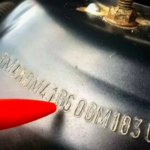In everyday life, there is constantly the need to repair any object, fasten two or more parts to each other or fix one object to another. For operational repair and bringing a breakdown into the appropriate type, you must always have a material for fasteners and a tool with which it is made.
The common modern elements of fastening are:
Nuts;
Rivets;
Bolts;
Shurups.
Some of them are intended for the integral implementation of fasteners, and when using others, it is possible to subsequently disassemble the connection. The most popular fixing connection in the household is the riveting option. This type of fastener is more suitable for thin -walled compounds and is carried out by means of rivets and nuts, which are made from reliable materials. The connection itself is strong and securely fixed. The metal used in the production of rivets can be different:
Aluminum;
Copper;
Steel;
Brass.
When choosing a particular rivet, it is necessary to take into account the temperature regime in which the renovated device will be located, since each material has its own expansion factors.
There is a separate category of rivets, which is called exhaust. With such fasteners, you can join even more than two fastened parts. The design of such rivets consists of two elements: a thin rogue that has a small ball at the end and tube. They have a different length, and can be corrugated, petal and others. Also, such rivets are distinguished by the configuration of their side, which may have a standard shape, secret or increased.
Another type of rivets, which differs according to the principle of action, is of the nature of the threaded connection and combines rivets and nuts in itself. This type of fastener can be used for joints of thin elements and divine into two types:
One -sided or deaf;
Bilateral or through. According to the execution of the rivets themselves, they can be divided into the following types:
Hexagons;
cylinders;
Half -westers.
In addition, there are various executions of the rivet side, which can be standard, reduced or secret. To make the fasteners reliable, and the fixation takes place firmly and for a long time the rifting of rivet elements is used.
Fastening by means of rivet elements is performed using a special tool.






